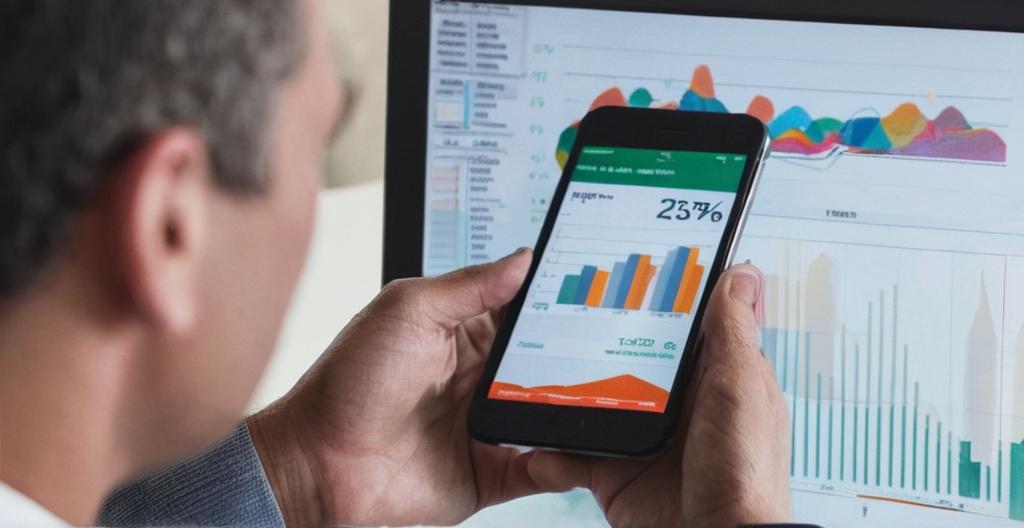Key Take Aways About Bar Chart
- Bar charts display open, high, low, and close (OHLC) prices for a period.
- A long bar indicates high volatility; a short bar indicates low volatility.
- Open above close signifies bearishness; close above open indicates bullishness.
- Color coding: Red for lower close, green for higher close.
- Bar charts aid pattern identification and inform trading strategies.
- They offer an uncluttered view compared to candlestick and line charts.
- External factors can influence chart predictions.

Understanding Bar Charts in Trading
Ever stood in front of a bar chart and just seen a bunch of colorful rectangles? Yep, me too. But once you get past the initial visual chaos, bar charts are like the old reliable of trading charts—straightforward, practical, and to the point. They offer a visual snapshot of price movements over a period, showing price action in a nifty way that’s easy on the eyes.
Bar Charts Basics
At its core, a bar chart provides information about the open, high, low, and close (OHLC) prices for a given period. Each “bar” represents one period (that could be a minute, day, week, etc.) with the vertical line showing the high and low, while two horizontal dashes indicate the open and close.
– **Open**: The left dash marks where the price started at the beginning of the period.
– **Close**: The right dash shows where the price was at the end of the period.
– **High and Low**: The top and bottom of the vertical line are the highest and lowest prices during that period.
With a quick glance—alright, maybe not that quick—you can size up the market sentiment. A bar that’s closing higher than it opens indicates bullishness, and vice versa for bearishness.
Reading the Bars
It’s not rocket science, but reading a bar chart does require some level of practice.
– **Long Vertical Bar**: High volatility. Prices are moving with some serious vengeance.
– **Short Vertical Bar**: Low volatility. The market’s taking it easy.
– **Open Above Close**: Sellers won, pushing prices down.
– **Close Above Open**: Buyers took the upper hand, lifting prices up.
Oh, and if the bar is red, it usually means the security closed lower than it opened. Green means it closed higher. Color coding might sound a bit kindergarten, but it makes spotting trends a breeze.
The Strategic Use of Bar Charts
One of the perks of bar charts is their adaptability. They’re not just another pretty chart; they actually provide key insights that can inform trading strategies. Identifying patterns—like double tops or bottoms—can signal potential reversals. Want to spot consolidations? Look for clusters of bars that show little movement—they might indicate a breakout or breakdown is around the corner.
Incorporating other indicators can elevate your game. Pairing bar charts with moving averages or RSI (Relative Strength Index) can offer a clearer picture of market dynamics.
Bar Charts vs. Other Charts
Bar charts are the bread and butter in a world of candlestick and line charts. While candlesticks offer more visual detail (you’ve got those fancy shadows and bodies), bar charts cut to the chase. They present pure data without frills, making them the go-to for traders who prefer an uncluttered view of price action.
Line charts, on the other hand, are a bit like vanilla ice cream—basic but sometimes just what you need. They plot the closing prices over time, giving an overall trend direction, but they miss out on the nuances offered by bar charts.
Case Study: Bar Charts in Action
Let’s say you’re trading XYZ Corp’s stock. Over a series of days, you notice that on your bar chart, daily bars are consistently closing higher than they open, coupled with increasing volume. This pattern suggests a strong bullish sentiment. If you’re thinking about jumping in, you might consider this a buy signal.
However, always keep your skeptical hat on. Even when the chart’s suggesting a rosy picture, external events (like a CEO scandal or disappointing earnings) can mess things right up. Bar charts, while insightful, are not psychic.
Final Thoughts on Bar Charts
Bar charts may not be the most glamorous tool in the trading toolbox, but they are tried and tested. They’re a staple for traders who don’t require bells and whistles when analyzing data. While they take a little practice to master, the insights they offer can be invaluable for making informed trading decisions.
Just remember, a bar chart is a tool, not a crystal ball. It offers an organized view of past price movements, but predicting the future—despite what anyone says—is still a mix of skill, strategy, and a touch of madness.